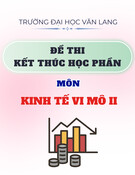
Chapter 7
Consumers, Producers, and the Efficiency of Markets
TRUE/FALSE
1. Welfare economics is the study of the welfare system.
ANS: F DIF: 1 REF: 7-1 NAT: Analytic
LOC: Supply and demand TOP: Welfare MSC: Definitional
2. The willingness to pay is the maximum amount that a buyer will pay for a good and measures how much the
buyer values the good.
ANS: T DIF: 1 REF: 7-1 NAT: Analytic
LOC: Supply and demand TOP: Willingness to pay
MSC: Definitional
3. For any given quantity, the price on a demand curve represents the marginal buyer's willingness to pay.
ANS: T DIF: 2 REF: 7-1 NAT: Analytic
LOC: Supply and demand TOP: Willingness to pay
MSC: Interpretive
4. A buyer is willing to buy a product at a price greater than or equal to his willingness to pay, but would refuse
to buy a product at a price less than his willingness to pay.
ANS: F DIF: 1 REF: 7-1 NAT: Analytic
LOC: Supply and demand TOP: Willingness to pay
MSC: Definitional
5. Consumer surplus is the amount a buyer actually has to pay for a good minus the amount the buyer is willing
to pay for it.
ANS: F DIF: 1 REF: 7-1 NAT: Analytic
LOC: Supply and demand TOP: Consumer surplus
MSC: Definitional
6. Consumer surplus is the amount a buyer is willing to pay for a good minus the amount the buyer actually has
to pay for it.
ANS: T DIF: 1 REF: 7-1 NAT: Analytic
LOC: Supply and demand TOP: Consumer surplus
MSC: Definitional
7. Consumer surplus measures the benefit to buyers of participating in a market.
ANS: T DIF: 1 REF: 7-1 NAT: Analytic
LOC: Supply and demand TOP: Consumer surplus
MSC: Interpretive
8. Consumer surplus can be measured as the area between the demand curve and the equilibrium price.
ANS: T DIF: 1 REF: 7-1 NAT: Analytic
LOC: Supply and demand TOP: Consumer surplus
MSC: Interpretive
9. Consumer surplus can be measured as the area between the demand curve and the supply curve.
ANS: F DIF: 1 REF: 7-1 NAT: Analytic
LOC: Supply and demand TOP: Consumer surplus
MSC: Interpretive
197

198 Chapter 7/Consumers, Producers, and the Efficiency of Markets
10. Joel has a 1966 Mustang, which he sells to Susie, an avid car collector. Susie is pleased since she paid $8,000
for the car but would have been willing to pay $11,000 for the car. Susie's consumer surplus is $2,000.
ANS: F DIF: 1 REF: 7-1 NAT: Analytic
LOC: Supply and demand TOP: Consumer surplus
MSC: Interpretive
11. If Darby values a soccer ball at $50, and she pays $40 for it, her consumer surplus is $10.
ANS: T DIF: 1 REF: 7-1 NAT: Analytic
LOC: Supply and demand TOP: Consumer surplus
MSC: Applicative
12. If Darby values a soccer ball at $50, and she pays $40 for it, her consumer surplus is $90.
ANS: F DIF: 1 REF: 7-1 NAT: Analytic
LOC: Supply and demand TOP: Consumer surplus
MSC: Applicative
13. All else equal, an increase in supply will cause an increase in consumer surplus.
ANS: T DIF: 2 REF: 7-1 NAT: Analytic
LOC: Supply and demand TOP: Consumer surplus
MSC: Applicative
14. Suppose there is an increase in supply that reduces market price. Consumer surplus increases because (1)
consumer surplus received by existing buyers increases and (2) new buyers enter the market.
ANS: T DIF: 2 REF: 7-1 NAT: Analytic
LOC: Supply and demand TOP: Consumer surplus
MSC: Interpretive
15. If the government imposes a binding price floor in a market, then the consumer surplus in that market will
increase.
ANS: F DIF: 2 REF: 7-1 NAT: Analytic
LOC: Supply and demand TOP: Consumer surplus
MSC: Applicative
16. If the government imposes a binding price floor in a market, then the consumer surplus in that market will
decrease.
ANS: T DIF: 2 REF: 7-1 NAT: Analytic
LOC: Supply and demand TOP: Consumer surplus
MSC: Applicative
17. Each seller of a product is willing to sell as long as the price he or she can receive is greater than the
opportunity cost of producing the product.
ANS: T DIF: 1 REF: 7-2 NAT: Analytic
LOC: Supply and demand TOP: Opportunity cost
MSC: Interpretive
18. At any quantity, the price given by the supply curve shows the cost of the lowest-cost seller.
ANS: F DIF: 2 REF: 7-2 NAT: Analytic
LOC: Supply and demand TOP: Opportunity cost
MSC: Interpretive
19. In a competitive market, sales go to those producers who are willing to supply the product at the lowest price.
ANS: T DIF: 1 REF: 7-2 NAT: Analytic
LOC: Supply and demand TOP: Efficiency MSC: Interpretive
20. Producer surplus is the amount a seller is paid minus the cost of production.
ANS: T DIF: 1 REF: 7-2 NAT: Analytic
LOC: Supply and demand TOP: Producer surplus
MSC: Definitional

Chapter 7/Consumers, Producers, and the Efficiency of Markets 199
21. Producer surplus is the cost of production minus the amount a seller is paid.
ANS: F DIF: 1 REF: 7-2 NAT: Analytic
LOC: Supply and demand TOP: Producer surplus
MSC: Definitional
22. All else equal, an increase in demand will cause an increase in producer surplus.
ANS: T DIF: 2 REF: 7-2 NAT: Analytic
LOC: Supply and demand TOP: Producer surplus
MSC: Applicative
23. All else equal, a decrease in demand will cause an increase in producer surplus.
ANS: F DIF: 2 REF: 7-2 NAT: Analytic
LOC: Supply and demand TOP: Producer surplus
MSC: Applicative
24. If producing a soccer ball costs Jake $5, and he sells it for $40, his producer surplus is $45.
ANS: F DIF: 1 REF: 7-2 NAT: Analytic
LOC: Supply and demand TOP: Producer surplus
MSC: Applicative
25. If producing a soccer ball costs Jake $5, and he sells it for $40, his producer surplus is $35.
ANS: T DIF: 1 REF: 7-2 NAT: Analytic
LOC: Supply and demand TOP: Producer surplus
MSC: Applicative
26. Connie can clean windows in large office buildings at a cost of $1 per window. The market price for window-
cleaning services is $3 per window. If Connie cleans 100 windows, her producer surplus is $100.
ANS: F DIF: 2 REF: 7-2 NAT: Analytic
LOC: Supply and demand TOP: Producer surplus
MSC: Applicative
27. Connie can clean windows in large office buildings at a cost of $1 per window. The market price for window-
cleaning services is $3 per window. If Connie cleans 100 windows, her producer surplus is $200.
ANS: T DIF: 2 REF: 7-2 NAT: Analytic
LOC: Supply and demand TOP: Producer surplus
MSC: Applicative
28. The area below the price and above the supply curve measures the producer surplus in a market.
ANS: T DIF: 2 REF: 7-2 NAT: Analytic
LOC: Supply and demand TOP: Producer surplus
MSC: Interpretive
29. The area below the demand curve and above the supply curve measures the producer surplus in a market.
ANS: F DIF: 2 REF: 7-2 NAT: Analytic
LOC: Supply and demand TOP: Producer surplus
MSC: Interpretive
30. If the government imposes a binding price ceiling in a market, then the producer surplus in that market will
increase.
ANS: F DIF: 2 REF: 7-2 NAT: Analytic
LOC: Supply and demand TOP: Producer surplus
MSC: Applicative
31. When demand increases so that market price increases, producer surplus increases because (1) producer
surplus received by existing sellers increases, and (2) new sellers enter the market.
ANS: T DIF: 2 REF: 7-2 NAT: Analytic
LOC: Supply and demand TOP: Producer surplus
MSC: Interpretive

200 Chapter 7/Consumers, Producers, and the Efficiency of Markets
32. Total surplus in a market is consumer surplus minus producer surplus.
ANS: F DIF: 1 REF: 7-3 NAT: Analytic
LOC: Supply and demand TOP: Total surplus
MSC: Definitional
33. Total surplus = Value to buyers - Costs to sellers.
ANS: T DIF: 2 REF: 7-3 NAT: Analytic
LOC: Supply and demand TOP: Total surplus
MSC: Interpretive
34. Total surplus in a market can be measured as the area below the supply curve plus the area above the demand
curve, up to the point of equilibrium.
ANS: F DIF: 2 REF: 7-3 NAT: Analytic
LOC: Supply and demand TOP: Total surplus
MSC: Interpretive
35. Producing a soccer ball costs Jake $5. He sells it to Darby for $35. Darby values the soccer ball at $50. For
this transaction, the total surplus in the market is $40.
ANS: F DIF: 2 REF: 7-3 NAT: Analytic
LOC: Supply and demand TOP: Total surplus
MSC: Applicative
36. The equilibrium of supply and demand in a market maximizes the total benefits to buyers and sellers of
participating in that market.
ANS: T DIF: 2 REF: 7-3 NAT: Analytic
LOC: Supply and demand TOP: Efficiency MSC: Interpretive
37. Efficiency refers to whether a market outcome is fair, while equality refers to whether the maximum amount
of output was produced from a given number of inputs.
ANS: F DIF: 1 REF: 7-3 NAT: Analytic
LOC: Supply and demand TOP: Efficiency | Equality
MSC: Definitional
38. Efficiency is related to the size of the economic pie, whereas equality is related to how the pie gets sliced and
distributed.
ANS: T DIF: 1 REF: 7-3 NAT: Analytic
LOC: Supply and demand TOP: Efficiency | Equality
MSC: Definitional
39. Free markets allocate (a) the supply of goods to the buyers who value them most highly and (b) the demand
for goods to the sellers who can produce them at least cost.
ANS: T DIF: 2 REF: 7-3 NAT: Analytic
LOC: Supply and demand TOP: Efficiency MSC: Interpretive
40. Economists generally believe that, although there may be advantages to society from ticket-scalping, the costs
to society of this activity outweigh the benefits.
ANS: F DIF: 2 REF: 7-3 NAT: Analytic
LOC: Supply and demand TOP: Efficiency MSC: Interpretive
41. Economists argue that restrictions against ticket scalping actually drive up the cost of many tickets.
ANS: T DIF: 2 REF: 7-3 NAT: Analytic
LOC: Supply and demand TOP: Efficiency MSC: Interpretive
42. If the United States legally allowed for a market in transplant organs, it is estimated that one kidney would sell
for at least $100,000.
ANS: F DIF: 2 REF: 7-3 NAT: Analytic
LOC: Supply and demand TOP: Efficiency | Equality
MSC: Interpretive

Chapter 7/Consumers, Producers, and the Efficiency of Markets 201
43. Even though participants in the economy are motivated by self-interest, the "invisible hand" of the
marketplace guides this self-interest into promoting general economic well-being.
ANS: T DIF: 2 REF: 7-3 NAT: Analytic
LOC: Supply and demand TOP: Invisible hand
MSC: Interpretive
44. The current policy on kidney donation effectively sets a price ceiling of zero.
ANS: T DIF: 2 REF: 7-3 NAT: Analytic
LOC: Supply and demand TOP: Efficiency MSC: Interpretive
45. Unless markets are perfectly competitive, they may fail to maximize the total benefits to buyers and sellers.
ANS: T DIF: 2 REF: 7-4 NAT: Analytic
LOC: Supply and demand TOP: Efficiency MSC: Interpretive
46. In order to conclude that markets are efficient, we assume that they are perfectly competitive.
ANS: T DIF: 2 REF: 7-4 NAT: Analytic
LOC: Supply and demand TOP: Efficiency MSC: Applicative
47. Markets will always allocate resources efficiently.
ANS: F DIF: 2 REF: 7-4 NAT: Analytic
LOC: Supply and demand TOP: Efficiency MSC: Applicative
48. When markets fail, public policy can potentially remedy the problem and increase economic efficiency.
ANS: T DIF: 2 REF: 7-4 NAT: Analytic
LOC: Supply and demand TOP: Market failure
MSC: Interpretive
49. Market power and externalities are examples of market failures.
ANS: T DIF: 2 REF: 7-4 NAT: Analytic
LOC: Supply and demand TOP: Market failure
MSC: Interpretive
SHORT ANSWER
1. Answer each of the following questions about demand and consumer surplus.
a. What is consumer surplus, and how is it measured?
b. What is the relationship between the demand curve and the willingness to pay?
c. Other things equal, what happens to consumer surplus if the price of a good falls? Why? Illustrate
using a demand curve.
d. In what way does the demand curve represent the benefit consumers receive from participating in a
market? In addition to the demand curve, what else must be considered to determine consumer
surplus?
ANS:
a. Consumer surplus measures the benefit to buyers of participating in a market. It is measured as the
amount a buyer is willing to pay for a good minus the amount a buyer actually pays for it. For an
individual purchase, consumer surplus is the difference between the willingness to pay, as shown
on the demand curve, and the market price. For the market, total consumer surplus is the area under
the demand curve and above the price, from the origin to the quantity purchased.
b. Because the demand curve shows the maximum amount buyers are willing to pay for a given
market quantity, the price given by the demand curve represents the willingness to pay of the
marginal buyer.

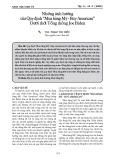
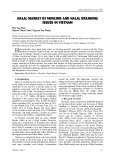
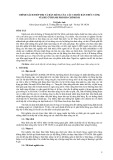
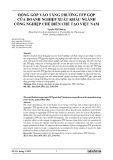
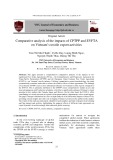
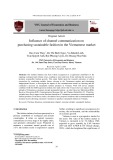


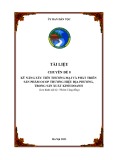



![Bài tập Kinh tế vi mô kèm đáp án [chuẩn nhất]](https://cdn.tailieu.vn/images/document/thumbnail/2025/20250923/thaovu2k5/135x160/19561758679224.jpg)


